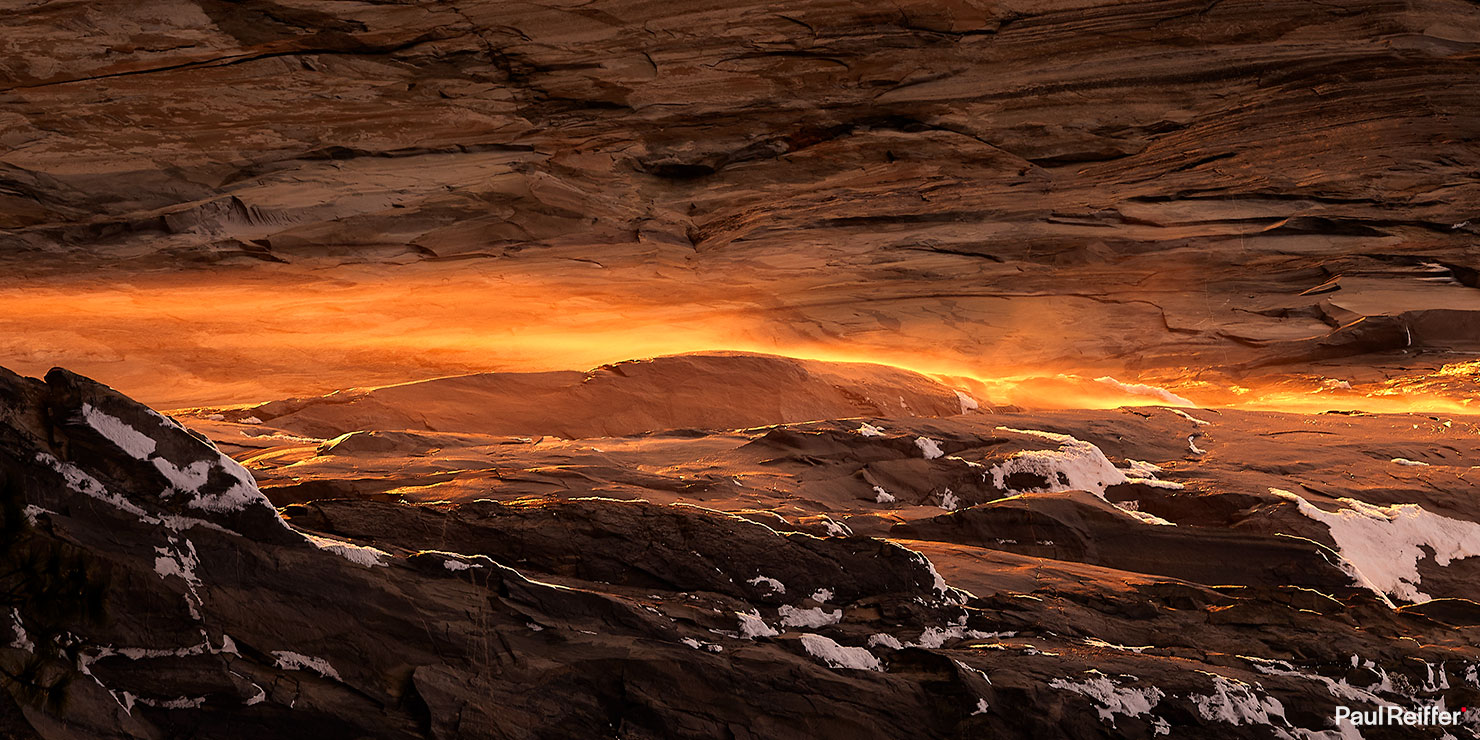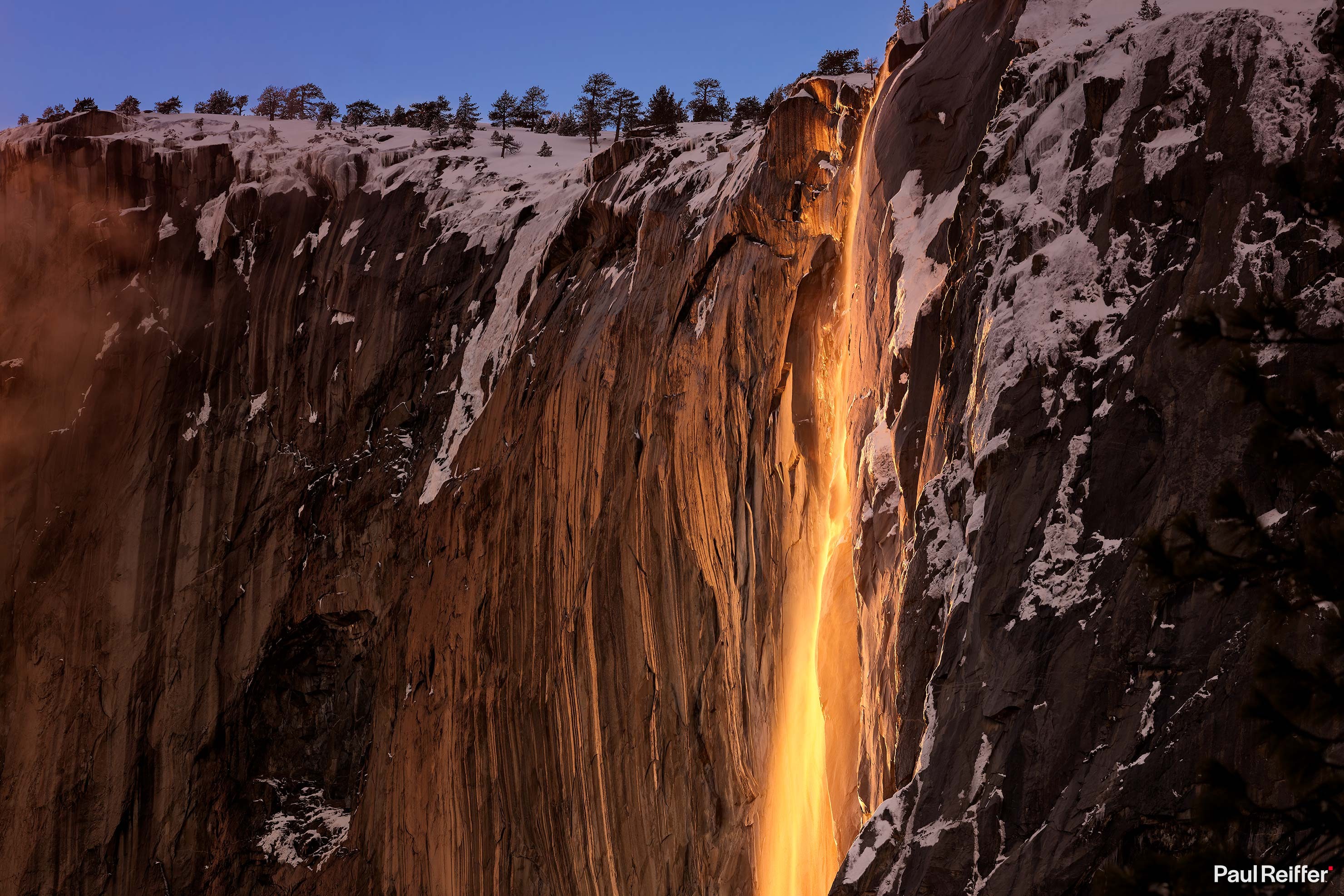It’s a rare thing these days, finding solitude in the world combined with a stunning natural phenomenon; the result of an “Instagram generation” of which we’re all now seemingly members – where the “selfie” and “tick-box” is often more important than witnessing the event itself.
While I stood in the thick snow of Yosemite National Park, in the shadow of El Capitan and Horsetail Falls, I couldn’t help but wonder how it must have felt for Galen Rowell back in 1973, taking the first known photograph of the natural “firefall” in peace, all those years ago. Looking at the thousands of spectators that surrounded me, that seemed like a different generation, and planet, to what we have now.
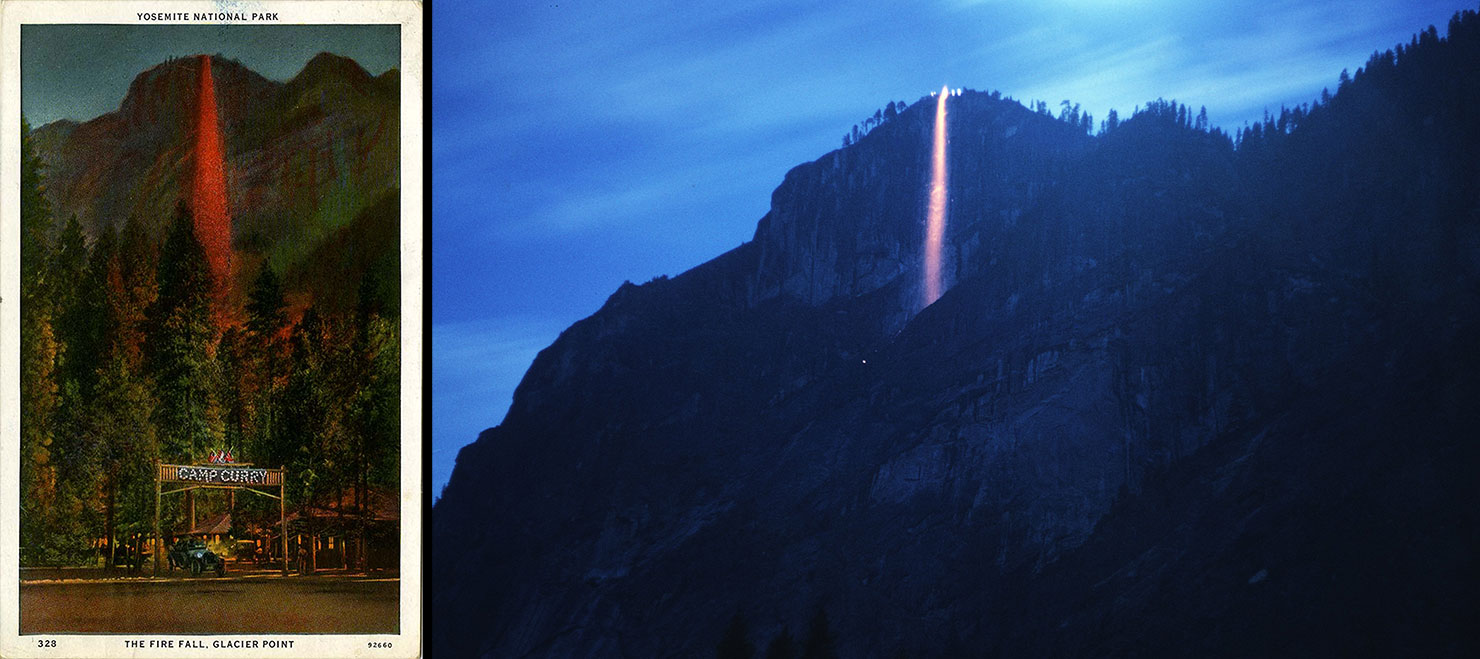
While Horsetail Falls provides the source of the, now famous, annual “Firefall” in Yosemite – the anarchic past of the original event has slowly faded into the history books. The word “firefall” actually came from an inadvertently started ceremony back in 1872 when James McCauley (the owner of the Glacier Point Mountain House Hotel), used to extinguish his guests’ bonfire by tipping it over the side of the mountain.
Nowadays, that would likely be seen as dangerous and irresponsible in a forest, but back then (and for nearly 100 years following) it became a spectacle that visitors from far and wide would stand in the valley to witness at 9pm in the evening. “Let the Fire Fall!” was the chant that echoed around the meadows below, with thousands cheering the glowing stream of embers as they flowed down the mountainside.
With crowd control issues, a general sense of concern for the park and a few temporary bans, the practice was permanently stopped in 1968. Fast forward 5 years, and attention had shifted from the southern peaks to the ridges of El Capitan, the view that the thousands who now head to Yosemite each February are looking to witness – the view that Galen Rowell had captured half a decade ago.

Something special happens for around a week each year – well, actually, twice a year (as the light also occurs in October, but there’s usually one required element missing). As the sun sets at one particular angle, the western face of El Capitan blocks most of the warm glowing light, except for a tiny slither that creeps around onto Horsetail Falls and nowhere else before disappearing into nightfall. Combine that with a flowing stream of water, and you have a naturally occurring appearance of the modern day “firefall”.
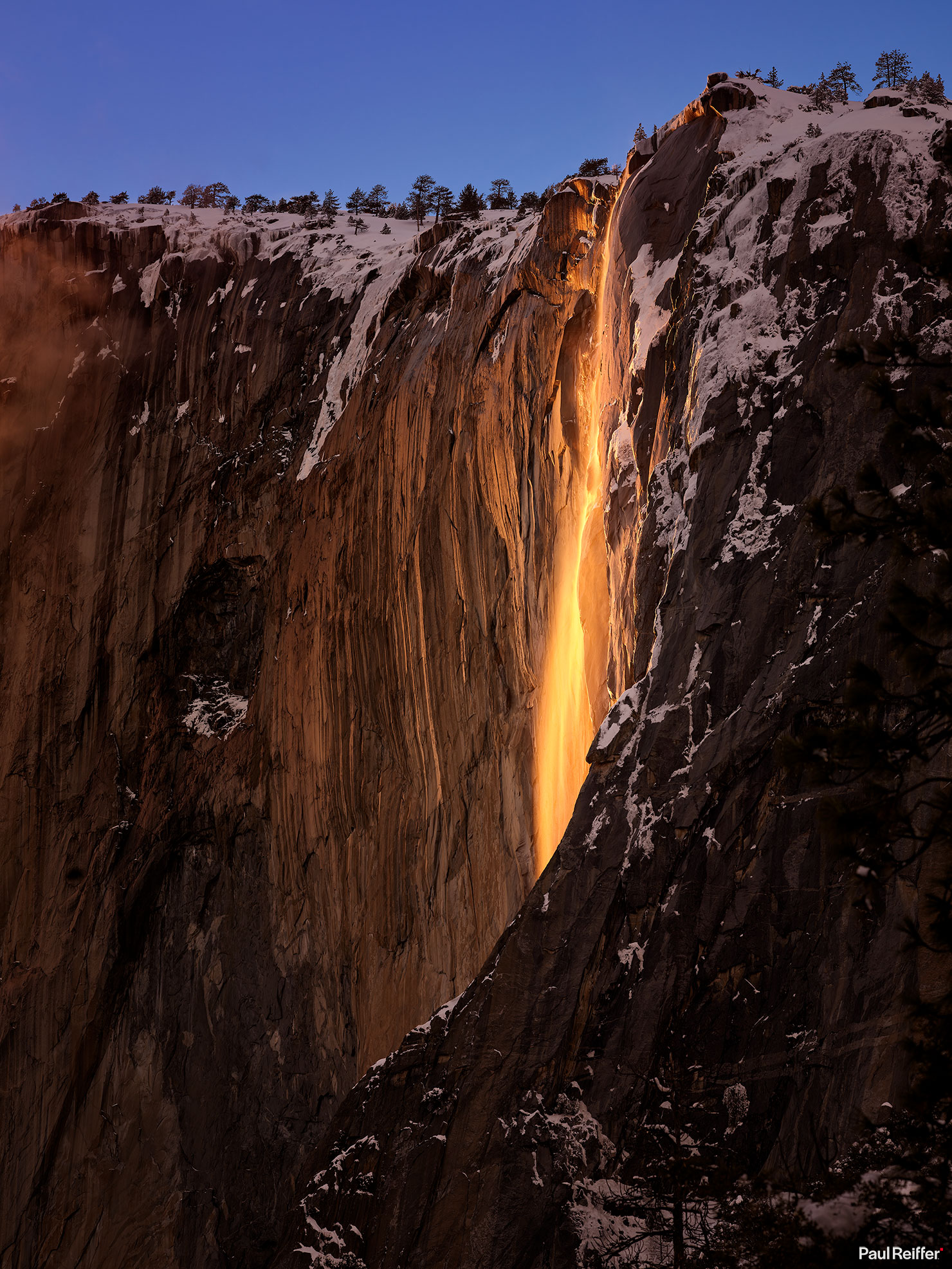
Having read about it for years, this was a phenomenon that I wanted to see with my own eyes, much like the sun rising through the archway of Durdle Door. And in much the same way, I knew it wouldn’t be a quiet or peaceful affair, but the charm of such an event meant I was determined to go at least once.
So what do we need for a “perfect” firefall? Quite a few things, it seems:
- The ability to access the park, with no major winter storms or “too much snow”.
- Sufficiently cold temperatures and snowpack to allow Horsetail Falls to be flowing.
- Not too much cold, so the waterfall isn’t fully frozen.
- A clear line of sight to the horizon where the sun sets, with no cloud blocking its path.
- Somewhere to stand and watch or photograph the south-eastern side of El Capitan.
With that list in mind, having travelled over 5,500 miles to get there, things didn’t look great for our first requirement as we headed up the hills towards the park.

Severe chain controls were in place across the valley, roads closed, and nearby Mammoth Mountain was already at nearly 40ft of snow this season. Undeterred, with a 4×4 and the world’s most expensive scrap metal in the form of chains in the back of the car just in case, we headed in…

…to genuine surprise. Once in Yosemite Valley itself, while there had clearly been a ton of snow delivered over the preceding days and weeks, the weather turned. We were met with glorious patches of blue skies and dramatic scenes in every direction – this could be good.
Arriving a day before “the day” (well, the most popular day in the forecast, it seems, for catching the falls) it was time to grab a quick test shot with my latest Phase One IQ4/150MP camera. Things seemed eerily simple – parking up, easily, in the El Capitan picnic area, we walked around 50m to a great view, and started clicking as the sun illuminated the mountain side.
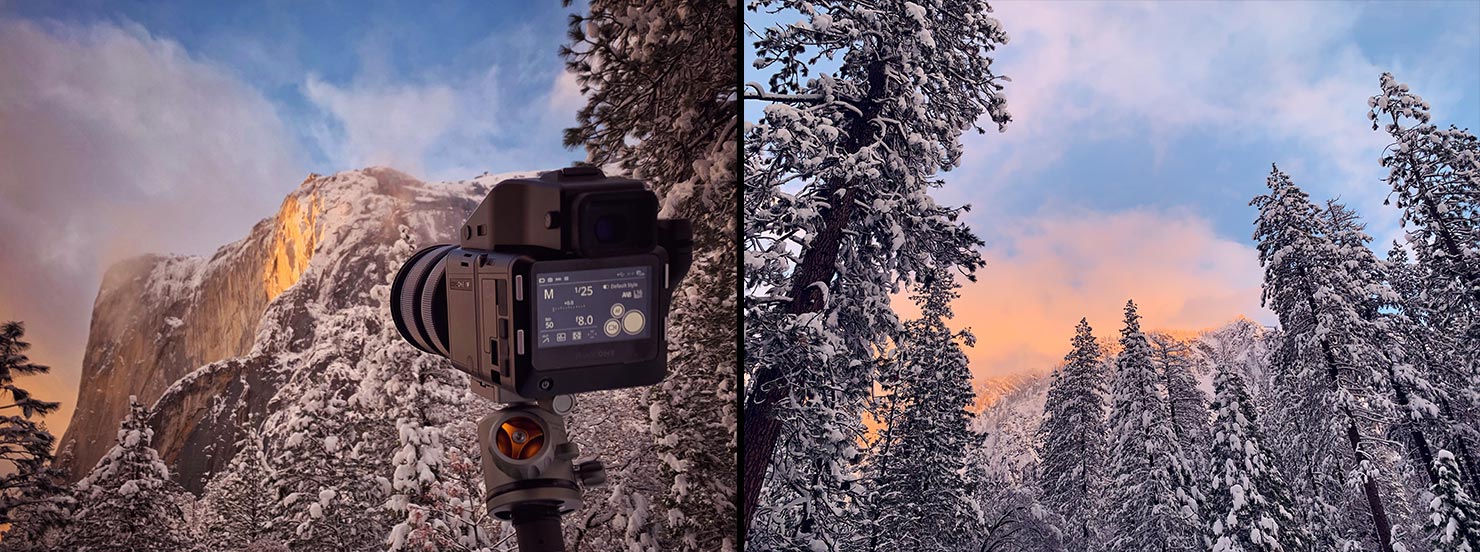
Sadly, the storm that we’d driven through to the west of the park meant that the sun, at the very last moment, disappeared – just enough to dampen the effect of the falls. While it managed to illuminate the sky around us with wonderful colours and tones, it wasn’t what I was here for – so I’d chalk this set down to “practice” and try again as planned on the next couple of evenings.

With “location A” under my belt, the next morning was a time for discovery – while it’s difficult to find clearings in the trees, could I get a better angle? (I thought so). We began our drive around the valley loop, but found something very different, and worrying, about today…

The National Parks Service had effecively closed down the whole of Yosemite’s parking system and road network for a 3 square mile block – specifically, the area looking at the falls.
In 2018, the park had experimented with vehicle permits, limiting the number of cars into the viewing area in an effort to curb the rising levels of traffic and improve safety. Whether caused by the government shutdown or not, this year hadn’t seen the same system adopted – instead, we were treated to a blanket ban on parking anywhere near the valley floor. To make matters worse, the bus system seemed to have been put on hold for the following 2 evenings, meaning every single spectator would be on foot for miles before reaching the viewing area.
Our “scouting for the best viewpoint” mission had transitioned into a “how on earth are we going to do this?” trip around Yosemite, looking for any and all options to get a view of Horsetail Falls within even a mile of the car. With up to 30kg of kit to bring with me, the 2 mile hike on offer from the official pull-outs wasn’t too attractive – especially as we watched others, including families with really small kids, making their way west (knowing the whole time that they would have to walk back the same way in the freezing cold dark of night later on).

With a tag-team plan hatched (and huge thanks to Vic and Gabi for taking on the driving!), we just about managed to avoid the crazy setup the park had put in place. Arriving at my “second spot” for the evening, there was definitely something different about tonight’s viewing – people.

Thousands of people. Marshalls screaming at them (yes, screaming!), and tripods as far as the eye could see. Whichever direction you looked, there were more and more photographers sat waiting for the event – some had been camped there for 5 hours already; absolute chaos. Oh, to be back there in 1973…
Still, we were all there for the same thing, and the community aspect really kicked in. We found ourselves in amongst a great group of Romanian photographers, enjoying a randomly fun debate about Brexit with them as the time for sunset approached. With everyone’s cameras pointing up, the usual “squabbles” about who’s in who’s shot just didn’t exist – and despite the craziness of the crowd numbers, time flew by with everyone seeming to enjoy the moment.
Sunset was near – the air started to cool. Unlike the previous night, that slither of light managed to hold on throughout this evening’s literal “golden hour”.

And then – BINGO.
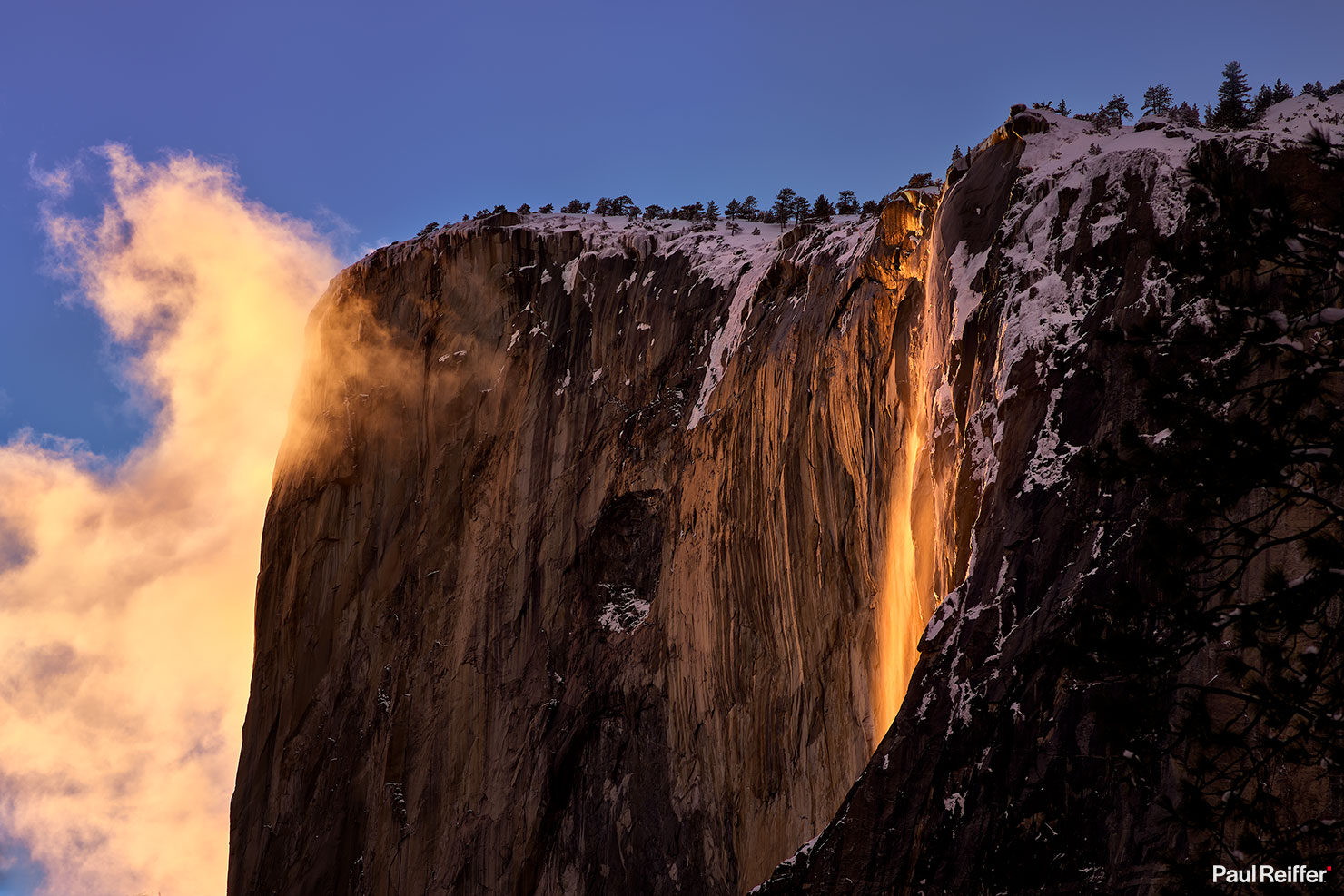
The sun hit the magical point on the horizon, turning the light into a warm glow. A burst of cloud had suddenly appeared across the nose of El Capitan, adding even more interest to the scene. Swapping between my 150mm lens (above) and the mighty 240mm Schneider Kreuznach “beast”, I could get up close to the detail of the amazing sight that was unfolding above us all.

With 151 megapixels on the new IQ4/150MP, I couldn’t resist zooming in to see what the camera had captured from miles away – I wasn’t disappointed. Here’s a 50% crop example from the full image…
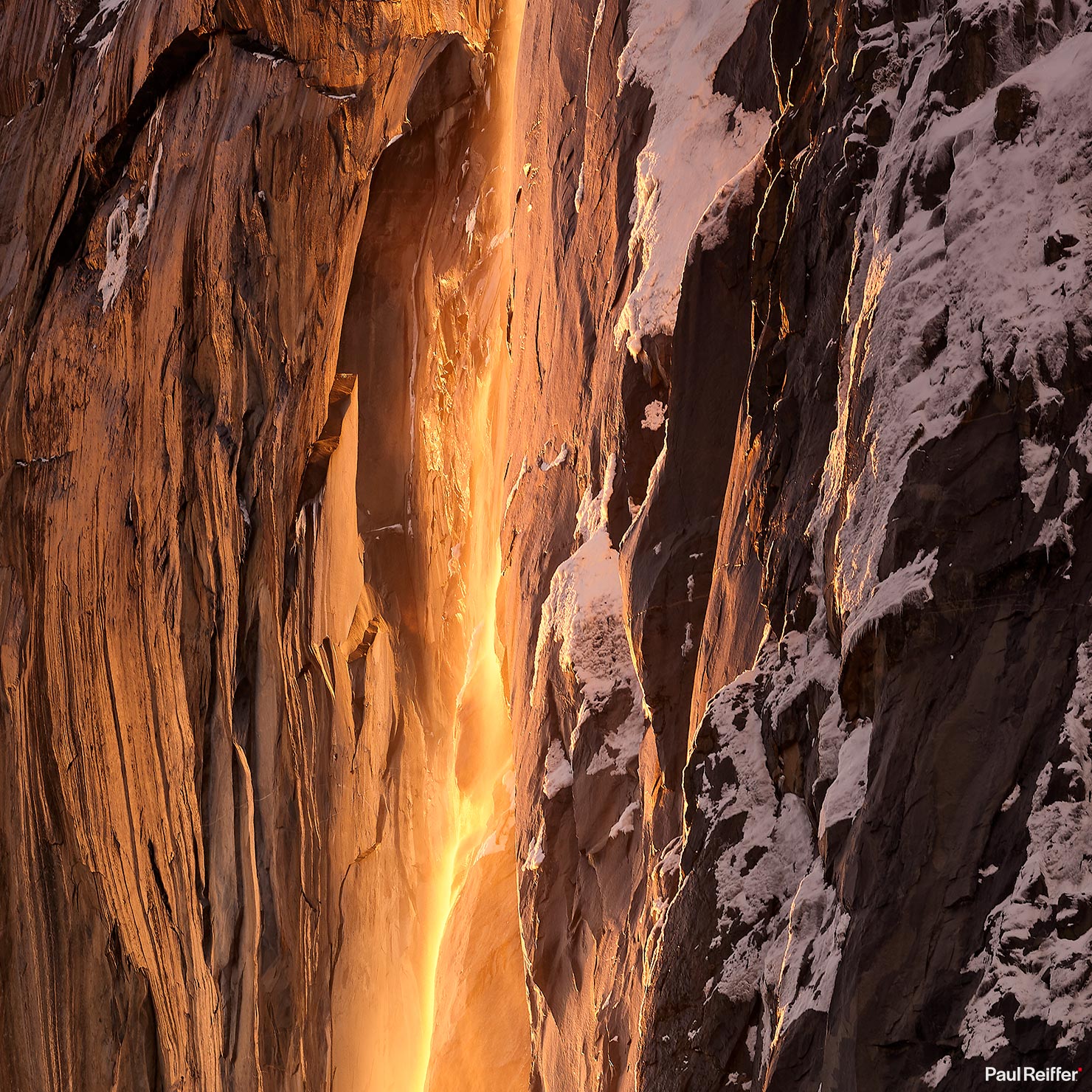
The texture, the colour, the sharpness, just wow. At 100%, this shot has an amazing amount of detail – it was everything I’d hoped to capture, and more.
Once all the light had faded, and as one of only a handful of others who remained beyond sunset, our “Yosemite Uber” was on its way within minutes to whisk us back to the warmth of the wonderful Ahwahnee Hotel for a few celebratory glasses of wine. (And no, don’t get me started on that ridiculous scenario which demands it be called the “Majestic Yosemite” for the time being!)

Morning called, and some observations for the future stays at the Ahwahnee:
- The dining room is truly stunning, but also truly freezing at breakfast if the heater has failed overnight.
- Eggs Benedict should never come with a squidgy giant tomato hidden underneath the egg.
- An outdoor terrace in your room is absolutely fantastic, if it doesn’t snow every night.
Anyway, for day 3 and “attempt 3”, armed with the knowledge of how crazy the transportation setup had been for day 2, I wasn’t taking any risks today. We headed out to shoot a series of landscape shots around the park while keeping an eye on alternative locations to shoot later that evening. With our “Yosemite Uber” setup established, I wasn’t worried about getting to these places too early and I already had that warm feeling that I had the shot I wanted – so anything else now was a bonus.
I found a spot along the riverbank. Significantly quieter than the “main area” on North Side Drive, but still offering a great view – albeit further away.

With snow-shoes in hand, a quick trek through the powder to the riverfront delivered a harsh reality check: No, we hadn’t managed to avoid the crowds. Again, however, we were all there to witness and capture the same thing – nobody was in each other’s way and there are worse places to be stood for an hour watching the view!
The clouds ebbed and flowed, across the line from the sun to El Capitan, with an accompanying trail of “ooooohs” and “ahhhhs” erupting from those around in reaction to the growing (and fading) light as we headed towards sunset. They say timing is everything…
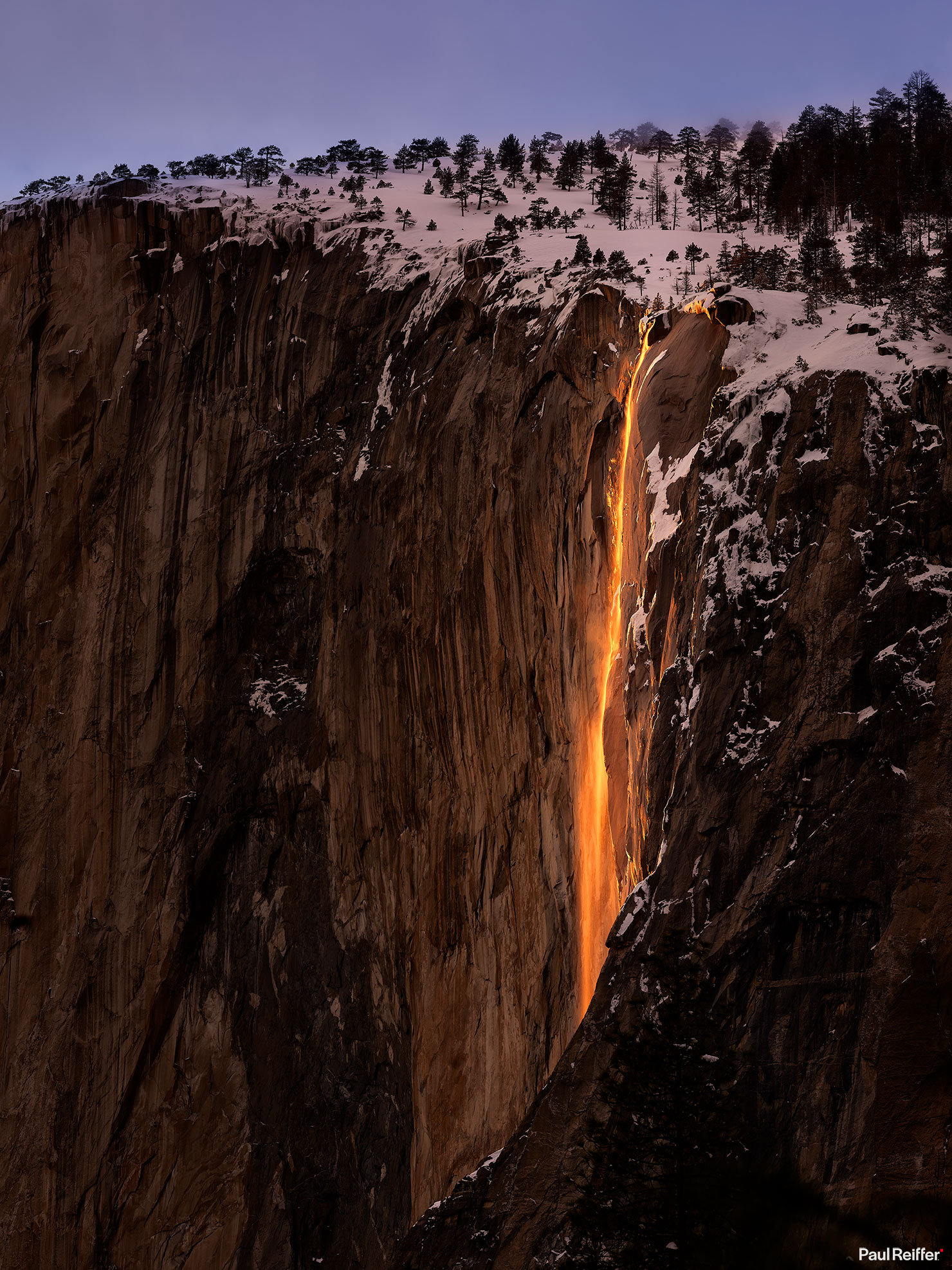
Further back from El Capitan, we could see the top of Horsetail Falls from here, and the distinct line of the glow from the falls. The water wasn’t flowing too rapidly, but it was enough to provide the perfect example of how amazing the Firefall can look from within the park.
With my age old trick of “make sure to look behind you”, that same light which had illuminated the mountains had also flooded the valley floor in the distance. The same scene which had been flat just moments before had lit up like an autumnal postcard – worthy of at least an iPhone shot while I clicked away at the waterfall in the opposite direction.

So, success! – I “got the shot” – always a happy feeling!
However, due to the way the National Parks Service had decided to control crowds, it also meant that one of our group, Vic, had managed to spend her entire time in Yosemite without witnessing the Firefall herself. While I’m forever grateful to her for sacrificing that experience to allow us ultimate location flexibility, I can’t help but feel Yosemite could have done so much better to make this enjoyable for more of its visitors:
- Why close down all existing parking lots along the valley floor?
- Why force visitors with families/children to walk for 2 miles to the viewing areas in the freezing cold?
- Why stop/slow down the frequency of valley floor buses on one of the busiest events of the year?
- Why not re-instate the permit system, “first come, first served” – just like with other National Park attractions – to control crowd numbers?
I just can’t help but feel the Firefall has become a perceived “burden” on the park. Far from something which is celebrated, and enjoyed by many – attracting new visitors to this amazing location every year – it’s now being designed to put people off and discourage them from seeing this wonderful, natural, phenomenon.
Some chose to ignore the park’s warnings – causing erosion to the riverbanks, damaging trees that were “in the way”, and other such destructive activities – for that, I can understand the park’s reaction and apparent need to protect the land from such people.
That said, for the majority to adhered to the rules (and those who managed to brave the cold, the hikes, the waits) this truly was the amazing natural scene we all thought it would be. For that alone, I’m truly grateful that I’ve been able to witness it with my own eyes.
Speaking of nature – doesn’t this also remind you of a rather famous slot canyon when rotated sideways…?
